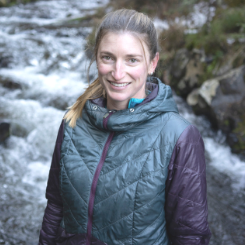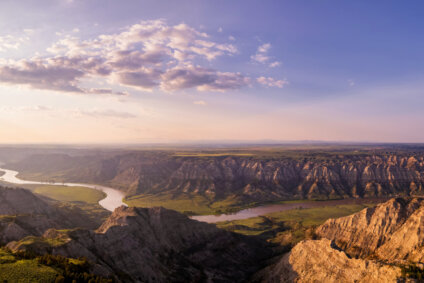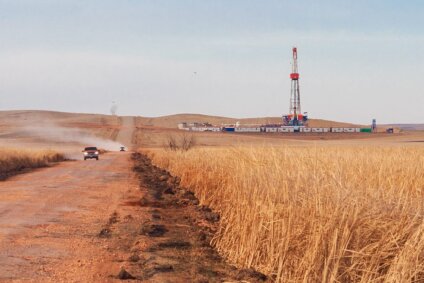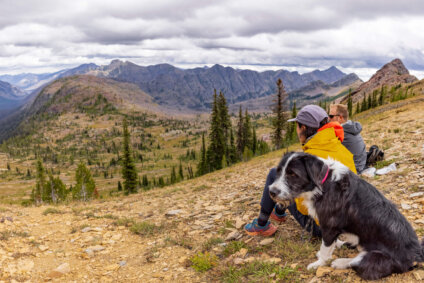The Last Best Chance for the Gallatin Range
The Gallatin Forest Partnership agreement is our most promising path towards permanently protecting the Gallatins
The Gallatin Range is the last landscape without permanent protection in one of the largest remaining intact temperate zone ecosystems in the world. It’s also one of the few remaining places in the Lower 48 that still supports a wide range of wildlife species that have existed here since the Pleistocene. But the surrounding communities are some of the fastest growing in the country, putting the Gallatins at risk of losing the wilderness character that makes them so special.
As Bozeman, Livingston, and Big Sky grow, the recreation pressure in these mountains is building, and we need to convince the Forest Service to recommend permanent protection for the Gallatin Range over the next year, or we could very well not have another chance. That could mean losing what we love about this range – the untrammeled wilderness that supports grizzlies, wolverines, elk, and other species that roam the range, as well as the clean, cold, and clear streams that support some of the best fishing in the world and eventually comes out of our taps.
With that in mind, the Gallatin Forest Partnership (GFP) joined together at the onset of the Custer Gallatin National Forest plan revision to develop a landscape scale approach to conservation recommendations in the Gallatin and Madison Ranges. Forest plan revision will determine how these ranges are managed for the next 20 to 30 years, by which time the population around the Gallatin Range could likely double in size.
A look back on the history of the Hyalite-Porcupine-Buffalo Horn (HPBH) Wilderness Study Area, which forms the wild core of the Gallatins, reveals that the GFP agreement is our last best chance to permanently protect the Gallatins and secure additions to the Lee Metcalf Wilderness.
The story of the Hyalite-Porcupine-Buffalo Horn WSA
The 1870 Northern Pacific Railroad Act resulted in checkerboard private land ownership throughout the Gallatins. Although the range largely retained its wild character throughout most of the 20th century, the management challenges resulting from the checkerboard prevented any real opportunities for Wilderness designation. However, in 1977 Congress recognized the wilderness character of the Gallatins and designated the 151,000-acre HPBH as a wilderness study area (WSA) in the Montana Wilderness Study Act.


Skiing and hiking in the Gallatin Range (photos by Louise Johns)
In the 1980s, Plum Creek Timber acquired a number of private parcels in the Gallatin and Madison Ranges from Burlington Northern Railroad. In 1992 Plum Creek sold those parcels to Big Sky Lumber. As clear-cutting ensued, the Forest Service and Congress launched an effort to consolidate private land in order to protect the remaining wilderness character of the Gallatins. A series of land exchanges continued into the 1990s, consolidating the core of the Gallatin Range as public land. While these exchanges resulted in large private blocks of land in the Bangtails and the Madisons that today include Big Sky and the Yellowstone Club, they also opened the door to permanent conservation protections in the Gallatins.
But another obstacle lay ahead for Wilderness in the Gallatins. During the 1950s and ‘60s motorized recreational use gained popularity, and by 1980 it had established a strong foothold, especially in the Porcupine-Buffalo Horn area in the southern Gallatins. The 1988 Montana Wilderness Bill attempted to address the recreational conflict that had developed between various uses. The bill proposed 64,000 acres of Wilderness in the northern Gallatins, and a 52,000-acre WSA in the southern part of the range to study levels of dispersed motorized and non-motorized recreation, trail use, and conflict. The 1988 bill, in one of the great conservation tragedies, passed both the House and Senate by overwhelming majorities only to be pocket vetoed by President Reagan.
After the failure of the 1988 bill, motorized and mechanized use expanded, with motorized trails crisscrossing the Gallatin Crest. In 1996, MWA litigated over how the Forest Service was managing WSAs across Montana, citing a loss of historic wilderness character due to increased motorized recreation and lack of appropriate management actions by the agency. In 2001 the Forest Service agreed to conduct travel planning for all WSAs.
Five years later the Gallatin National Forest released its travel management decision. MWA again challenged the WSA management direction, arguing that the plan violated the 1977 Montana Wilderness Study Act by allowing excessive motorized use and failing to protect wilderness character in the WSA. In 2009 the Forest Service issued an interim travel order restoring foot and horse primitive recreation in the core of the Gallatins and restricting motorized and mechanized use to the areas where it exists today.
This court victory was a big deal. If those uses had been allowed to continue, the chance of a Wilderness designation within the WSA would have been slim.
With the land consolidated and the motorized/mechanized recreation footprint reduced, the next hurdle for Wilderness designation is the Custer Gallatin Forest plan revision. If the Forest Service recommends Wilderness, there is a much stronger likelihood that Congress will designate the area as such.
With more and more people recreating in the Gallatin Range, it will take overwhelming community support to convince the Forest Service to recommend Wilderness in the Gallatins. A solution that can bring different users together to advocate for shared values stands the best chance of finally establishing Wilderness in these mountains.
The Gallatin Forest Partnership agreement offers that solution.
The Gallatin Forest Partnership
The ultimate intent of the GFP is to advance a legislative package of new Wilderness and a combination of permanent conservation designations to replace the WSA designation, strengthening protection and ensuring permanent protection of the Gallatins. We propose 102,000 acres of Recommended Wilderness in the Gallatin Range, running continuously from Yellowstone National Park to Hyalite Peak, ensuring north-south connectivity. The proposed area encompasses the entire Big Creek drainage, Rock Creek, and Tom Miner basins – all of which include a diversity of lower elevation habitat and significant densities of grizzly bears. This is nearly double the acreage that was proposed for Wilderness designation in the 1988 bill.

What’s more, all of the GFP partners, including mountain bike clubs, agree that the recommended Wilderness in the agreement should be managed to prohibit uses that are not allowed in designated Wilderness. At a time when many recommended Wilderness areas around the country are losing their protected status because of established uses by bikes, motorcycles, and snowmobiles, this is significant.
However the opportunity for diverse, quality recreation on our public lands is highly valued by our community, and in order to get widespread community support for new Wilderness we need to work with our communities. With that in mind, the GFP felt it was important to maintain the current recreation access that exists. In the areas of the WSA where motorcycle, snowmobile, and mountain bike use have been established for decades and continue to this day, the GFP proposes special management areas, with management recommendations tailored to each specific landscape.
____________________________________________________________________________________
With more and more people recreating in the Gallatin Range, it will take overwhelming community support to convince the Forest Service to recommend Wilderness in the Gallatins. A solution that can bring different users together to advocate for shared values stands the best chance of finally establishing Wilderness in these mountains.
____________________________________________________________________________________
Through our travel plan litigation, we made significant strides in reducing the motorized and mechanized footprint in the WSA. But until we implement the kind of durable solution the GFP proposes, those gains are just temporary. The new Wilderness and special management areas proposed by the GFP would cement the interim travel plan.
An Ending to the Story
The effort to protect these lands has been a long story fraught with obstacles. We believe the GFP can provide an end to that story and finally achieve Wilderness for the Gallatins. The GFP agreement builds on decades of work to protect key areas of the Greater Yellowstone Ecosystem. It reflects our shared values to protect our wildlands, our clean drinking water, diverse wildlife, and high-quality recreation.
The GFP reflects more than just the values of our wild backyard, it reflects the values of Montana Wilderness Association. Since 1958 we have been committed to working with communities to protect Montana's wilderness heritage, quiet beauty and outdoor traditions, now and for future generations. By building a partnership with our fellow community members, we have charted a path towards permanently protecting 250,000 acres in the Gallatin and Madison ranges with a combination of Wilderness and special management area designations.
The Custer Gallatin draft forest plan will be released this March. It represents our most powerful opportunity to protect our backyard public lands. By joining together in support of the GFP agreement, we can demonstrate to the Forest Service what our community values. We can demonstrate that we have a real solution for balancing and protecting those values. But the Forest Service needs to know that our community is supportive of this solution. You can help by endorsing the GFP agreement at gallatinpartners.org.
– Emily Cleveland, MWA southwest Montana field director

Stay Connected
"(Required)" indicates required fields


